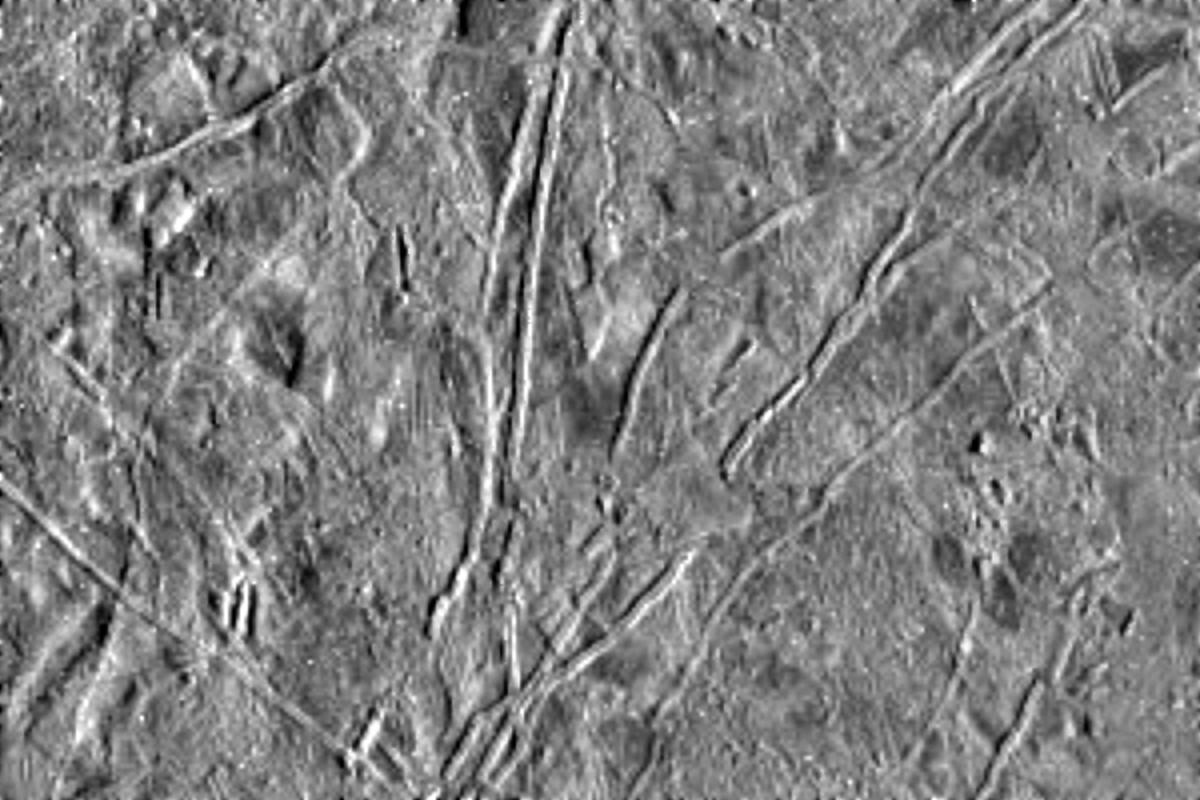All Resources
Flows on Europa

The icy surface of Europa, one of the moons of Jupiter, was photographed by the Galileo spacecraft on its fourth orbit around Jupiter. The area shown here is about 77 miles (124 kilometers) by 115 miles (186 kilometers) across and shows features as small as a half a mile (800 meters) across. Thick, lobate flows, the first seen on Europa or any of the icy satellites of Jupiter, are visible in several areas, including the lower right quarter of the picture where one flow cuts across a prominent ridge. Most of the ridges on the left side of the picture appear to be partly buried or subdued by flows. The ice-rich surface of Europa suggests that the flows might also be ice, perhaps erupted onto the surface from the interior as viscous, glacierlike masses.
This picture was taken by the solid state imaging television camera on board the Galileo spacecraft at a distance of 39,191 miles (63,490 kilometers). The picture is centered at 319.5 degrees West, 5.11 degrees North; north is toward the top of the image with the sun shining from the right to the left.


